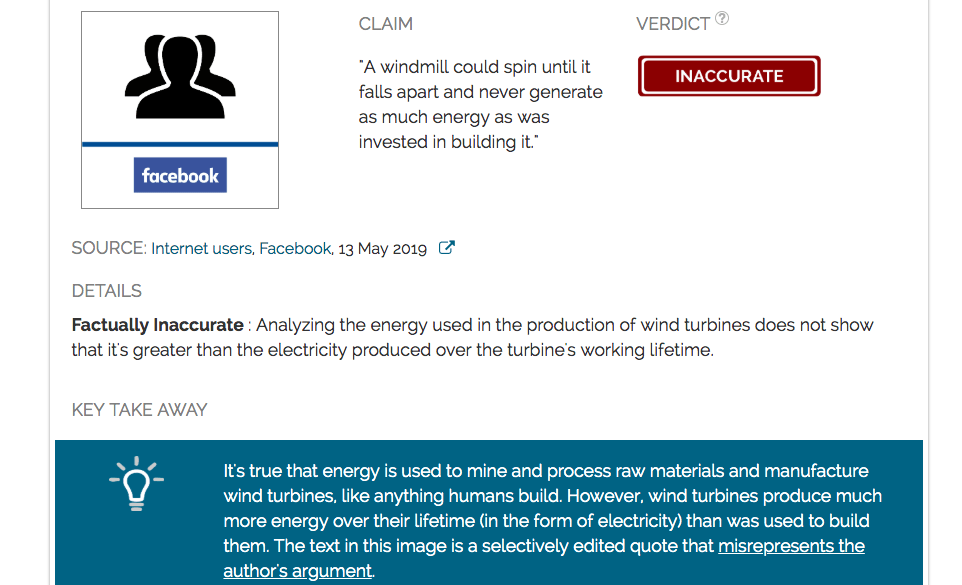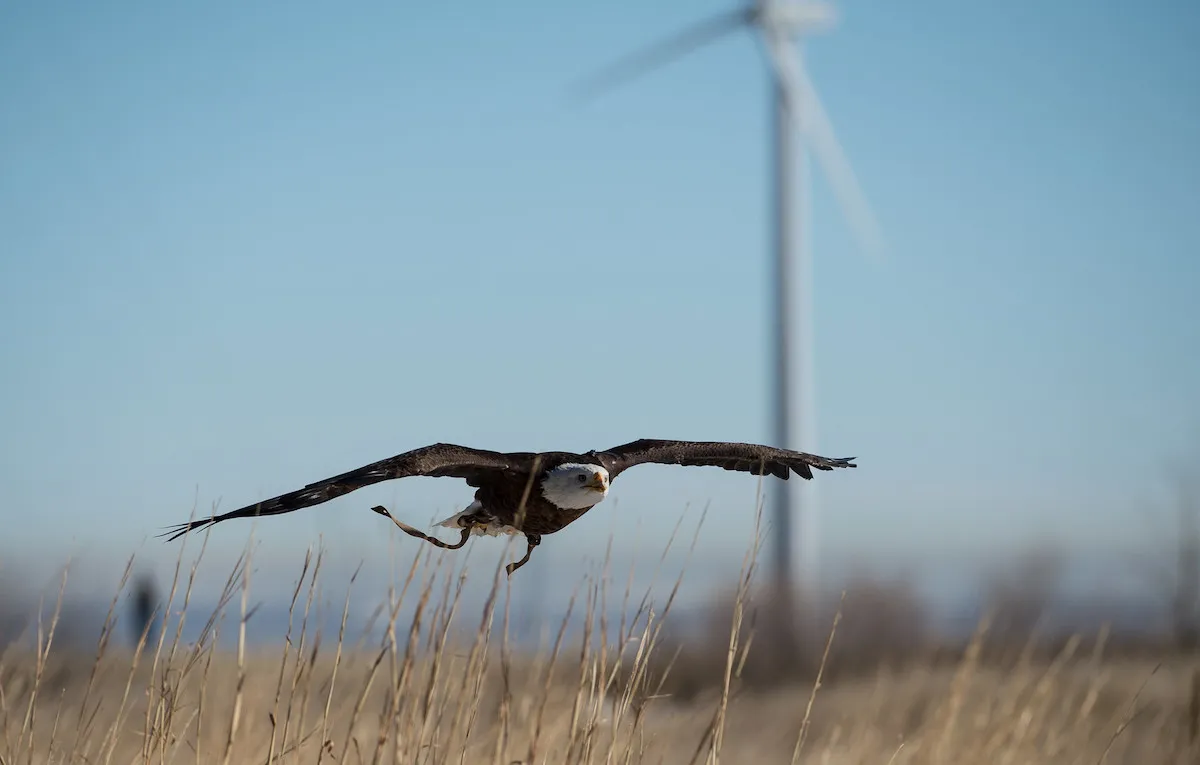- Energy
Meme image falsely claims wind turbines produce less energy that is used to build them
Key takeaway
It's true that energy is used to mine and process raw materials and manufacture wind turbines, like anything humans build. However, wind turbines produce much more energy over their lifetime (in the form of electricity) than was used to build them. The text in this image is a selectively edited quote that misrepresents the author's argument.
Reviewed content

Verdict:
Claim:
A windmill could spin until it falls apart and never generate as much energy as was invested in building it.
Verdict detail
Factually Inaccurate: Analyzing the energy used in the production of wind turbines does not show that it's greater than the electricity produced over the turbine's working lifetime.
Full Claim
A two-megawatt windmill is made up of 260 tons of steel that required 300 tons of iron ore and 170 tons of coking coal, all mined, transported and produced by hydrocarbons. A windmill could spin until it falls apart and never generate as much energy as was invested in building it.

Research Associate, Colorado State University/NASA JPL
The average working wind farm that has been studied produces about 20 times more energy than was used to make them1. Some wind farms are better, some are worse. Solar, too, produces more energy than was used to make the solar farm.
- 1- Kubiszewski et al (2010) Meta-analysis of net energy return for wind power systems, Renewable Energy

Senior Scientist, Carnegie Institution for Science
Numbers for “Energy Return on Investment” (EROI) are all over the place, but a nice summary with references to supporting information was produced for Scientific American by Mason Inman for the April 2013 edition of Scientific American. Mason estimated that wind returns about 20 times the energy input and solar around 6 times their energy input. While these numbers do depend on a range of assumptions, the idea that these ratios are less than one is wrong and not defensible.
The construction of wind turbines and solar panels does result in some carbon dioxide emission but far less than would be emitted were that electricity generated using fossil fuels such as coal, gas, or oil. Therefore, if the alternative is fossil fuels, these technologies help avoid carbon dioxide emissions.
It should be noted that Energy Return on Investment is likely to increase over time as the economy becomes more efficient and thus economic inputs to the production of energy technologies becomes less energy intensive.
Mark Diesendorf, Honorary Associate Professor, University of New South Wales:
The energy input to a wind farm is generated in 3 to 6 months of its operation, depending on location, and the energy input to a solar farm is generated in 1 to 3 years of its operation, depending on location and type of solar panel used. Both wind and solar farms have expected lifetimes of about 25 years.
- Lunardi et al (2018) Life cycle assessment on PERC solar modules, Solar Energy Materials and Solar Cells
- Martínez et al (2009) Life cycle assessment of a multi-megawatt wind turbine, Renewable Energy
- Raugei (2012) The energy return on energy investment (EROI) of photovoltaics: Methodology and comparisons with fossil fuel life cycles, Energy Policy



